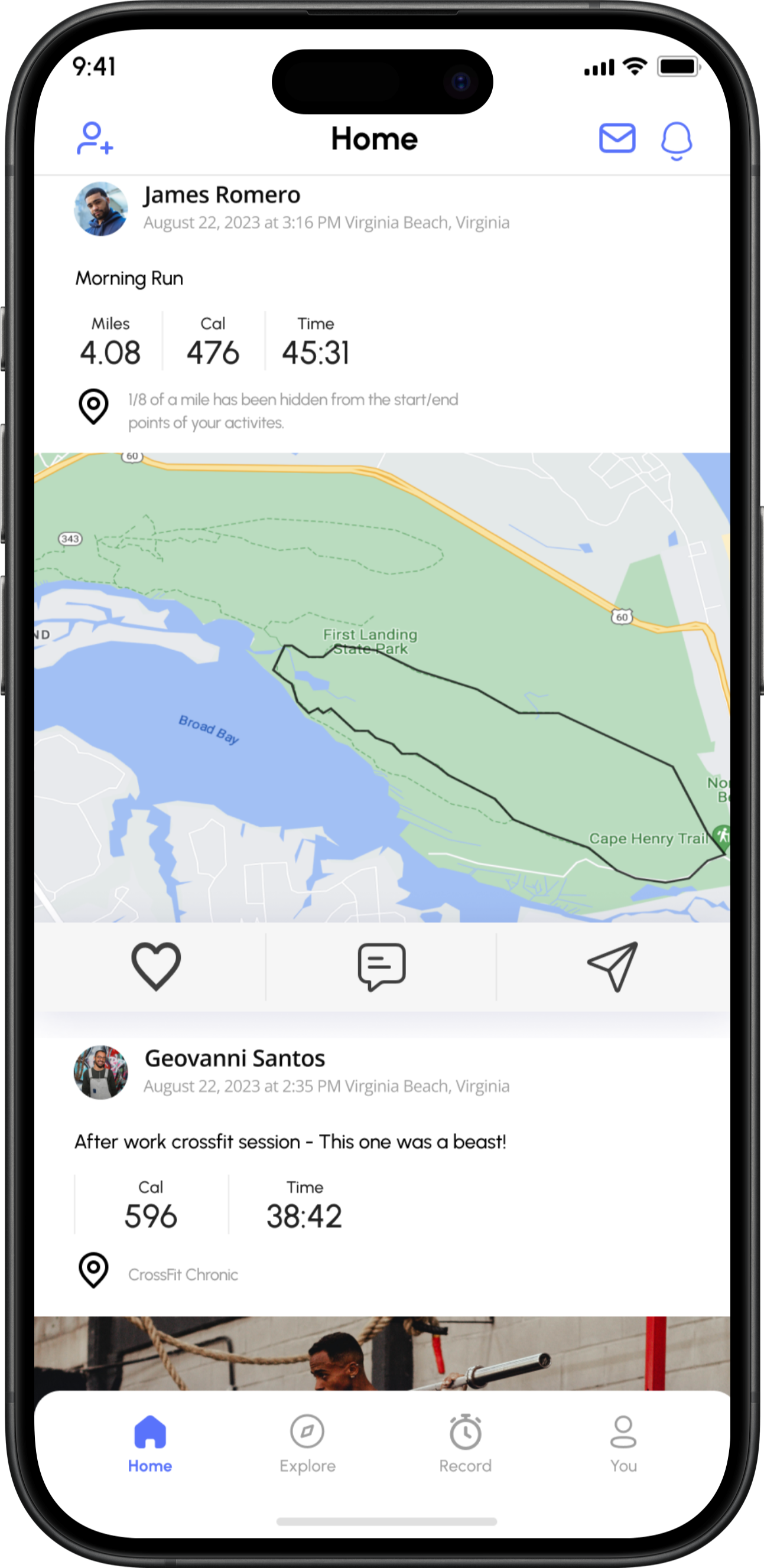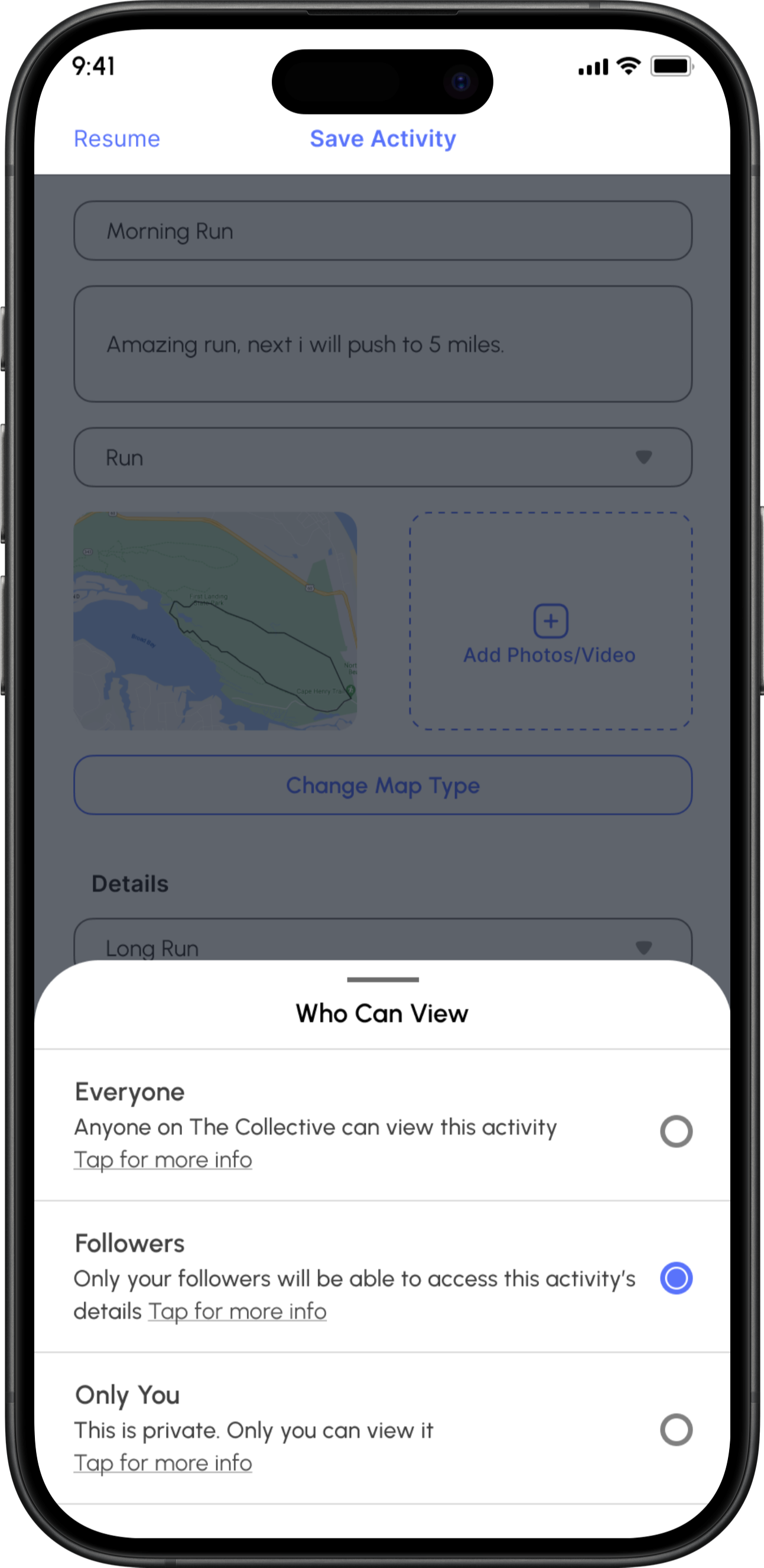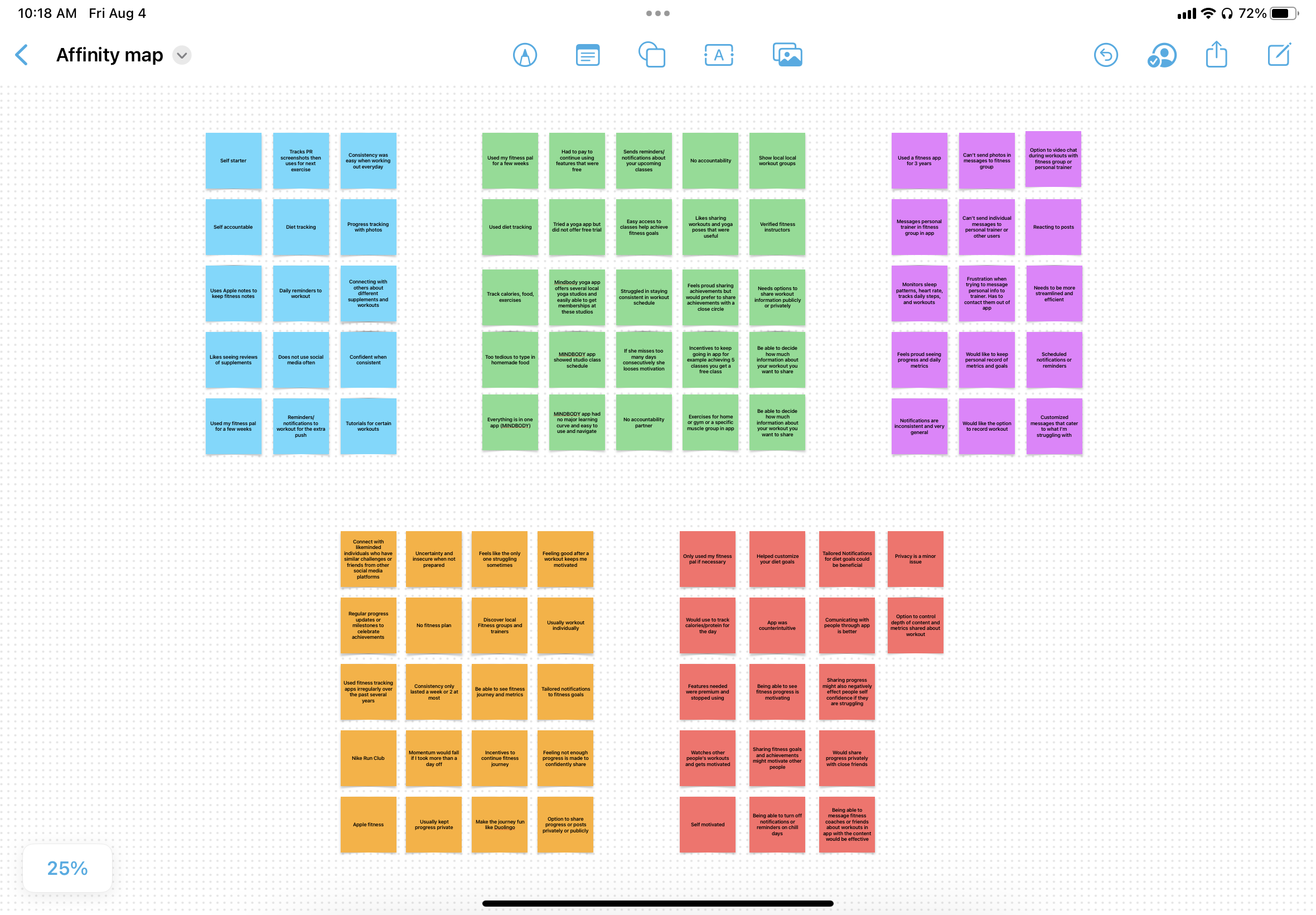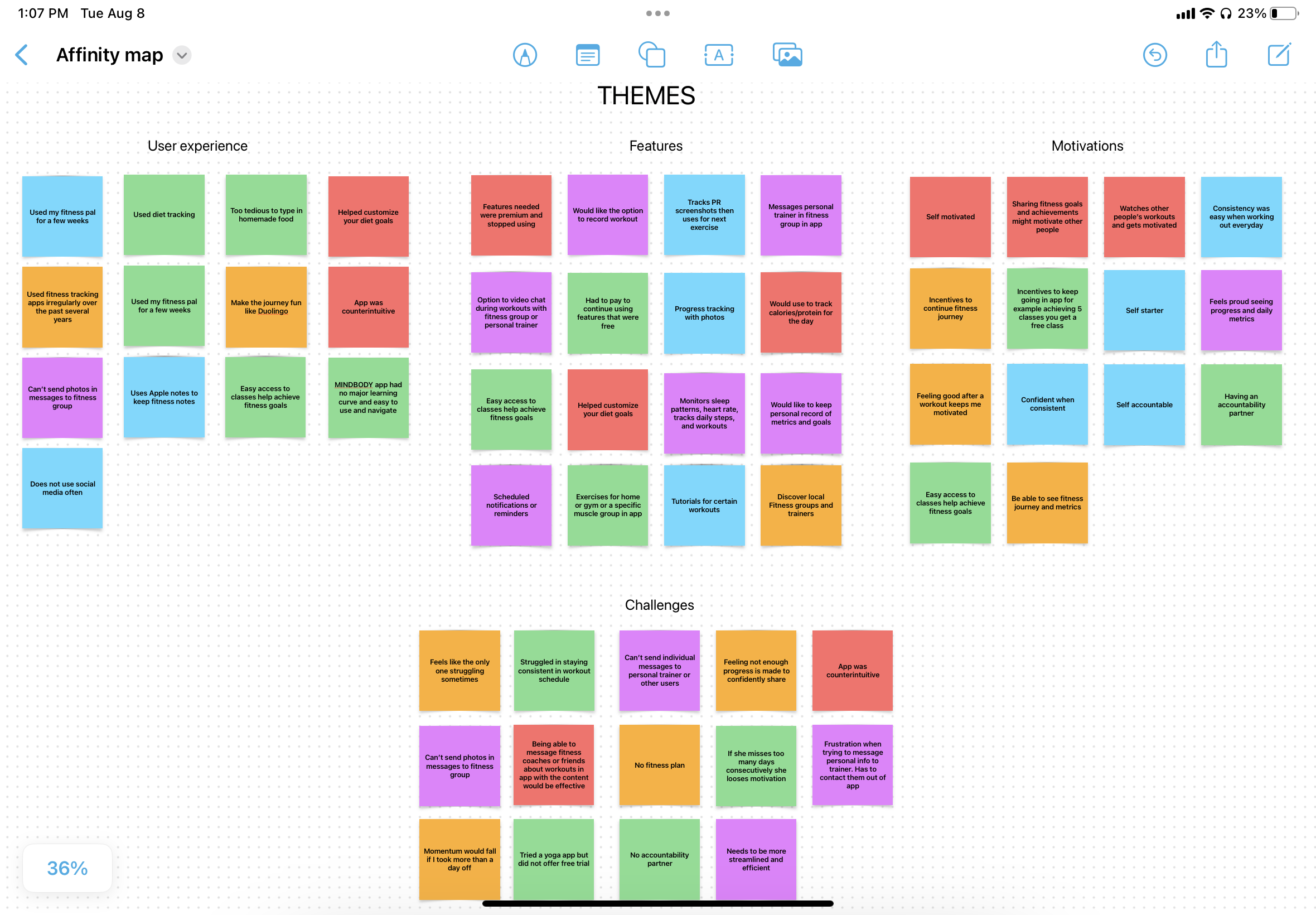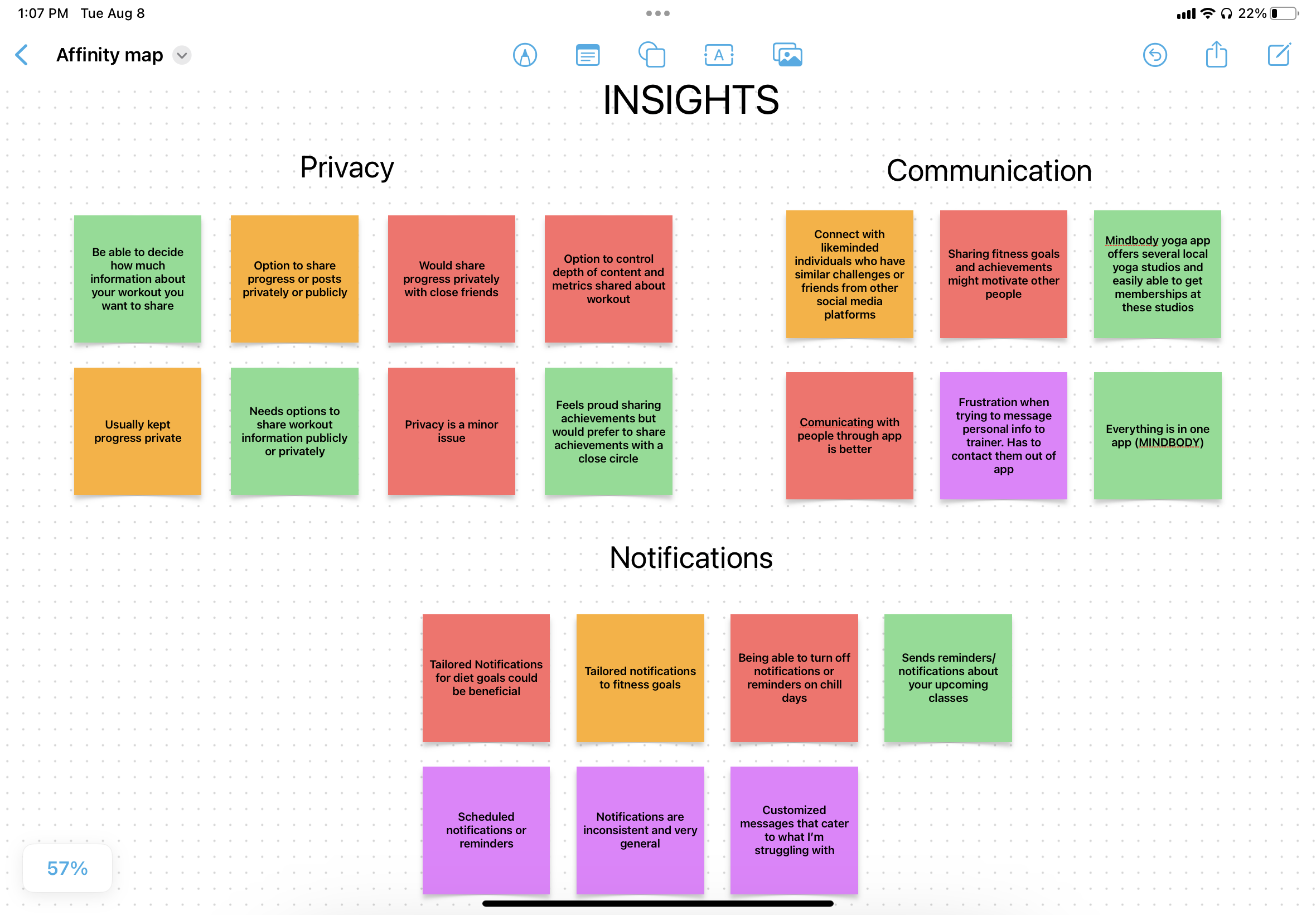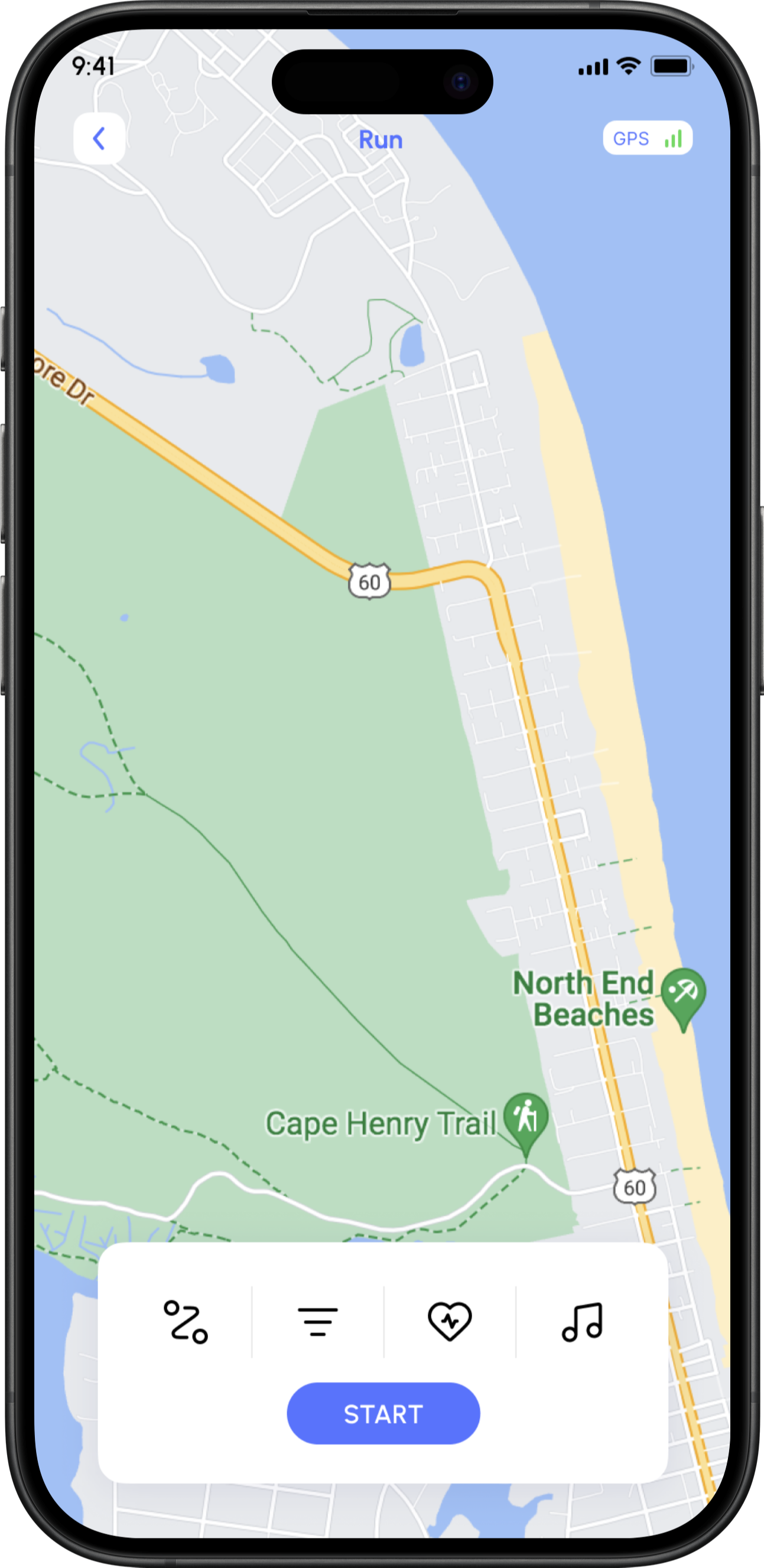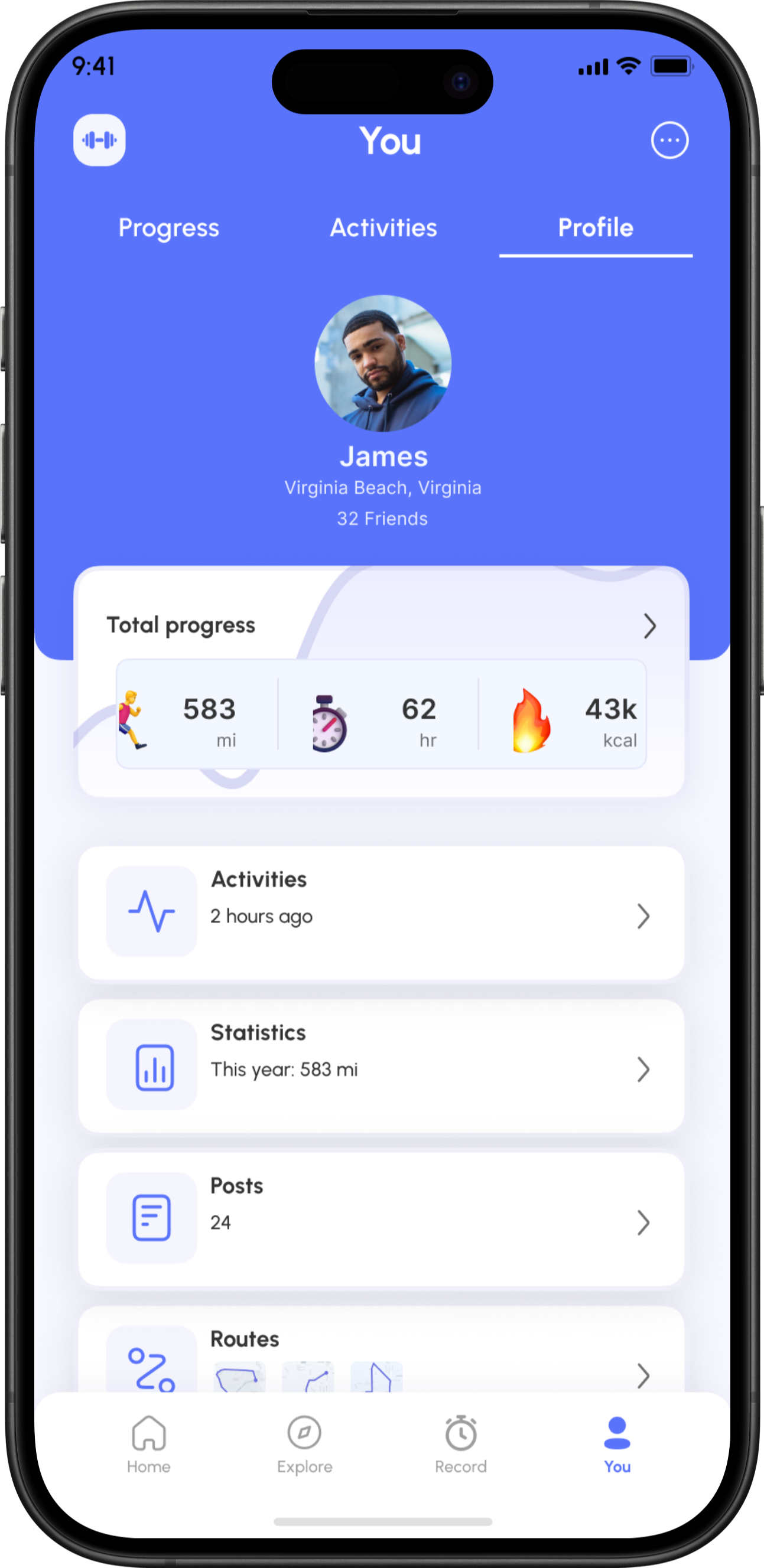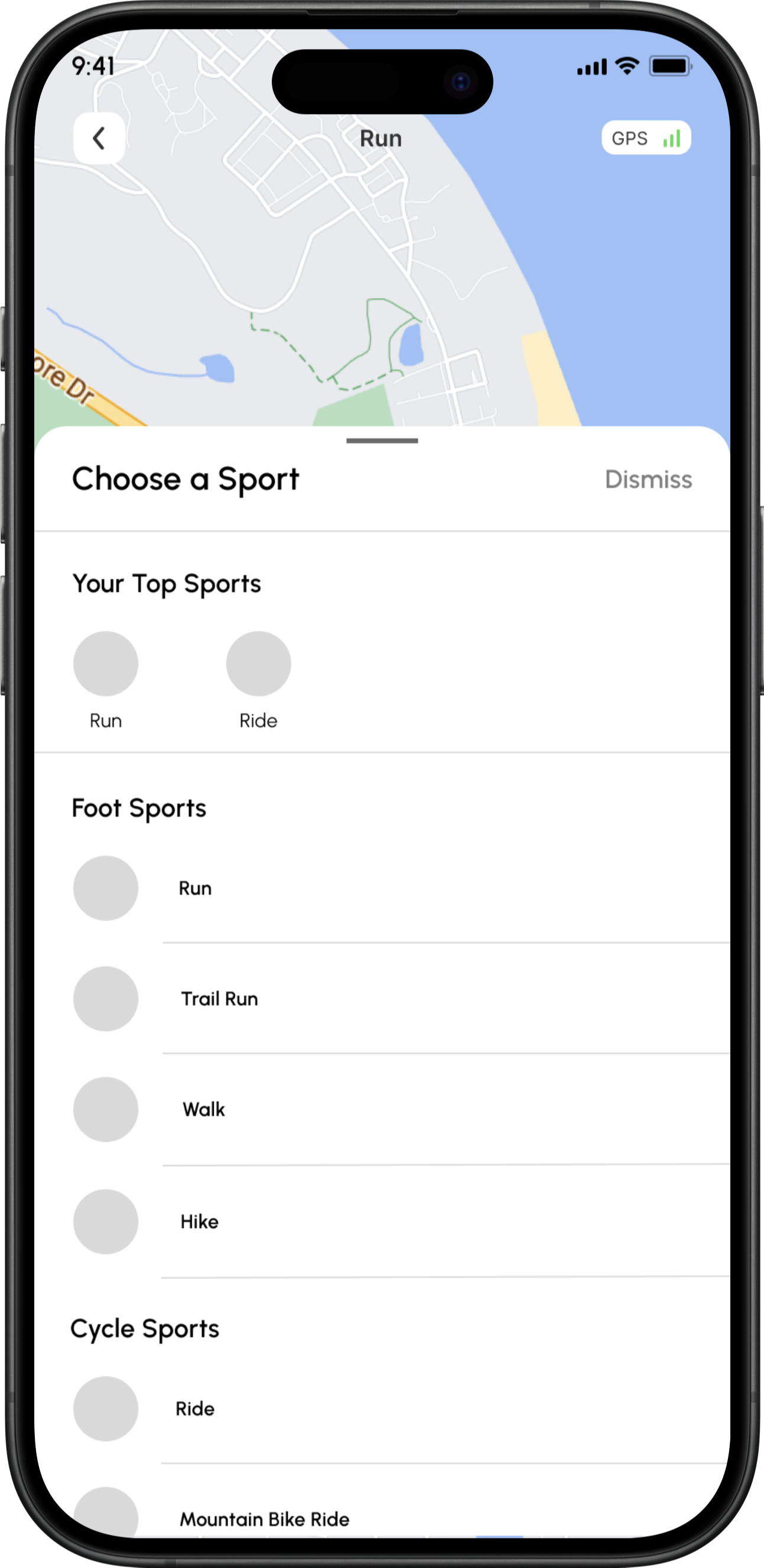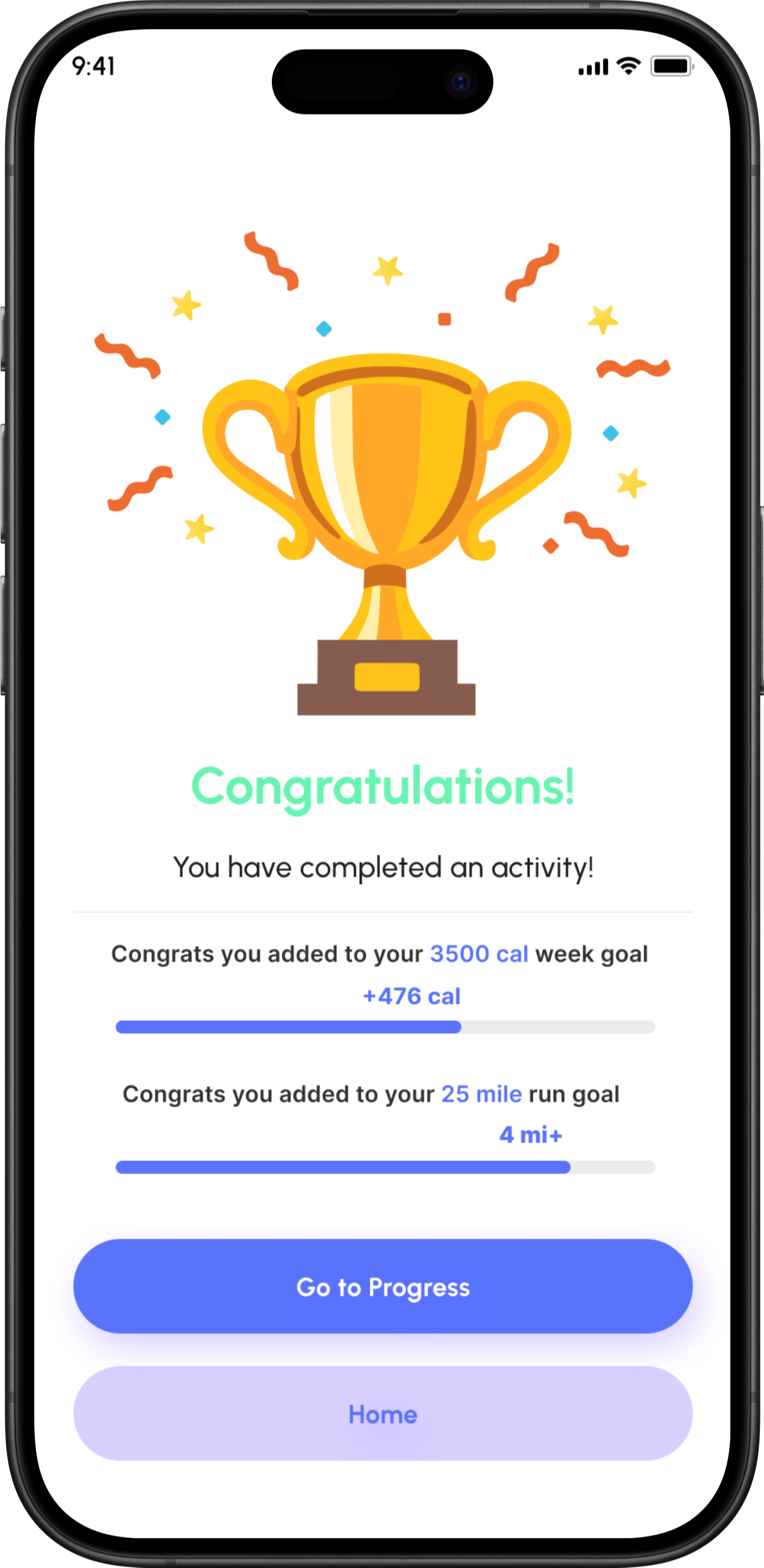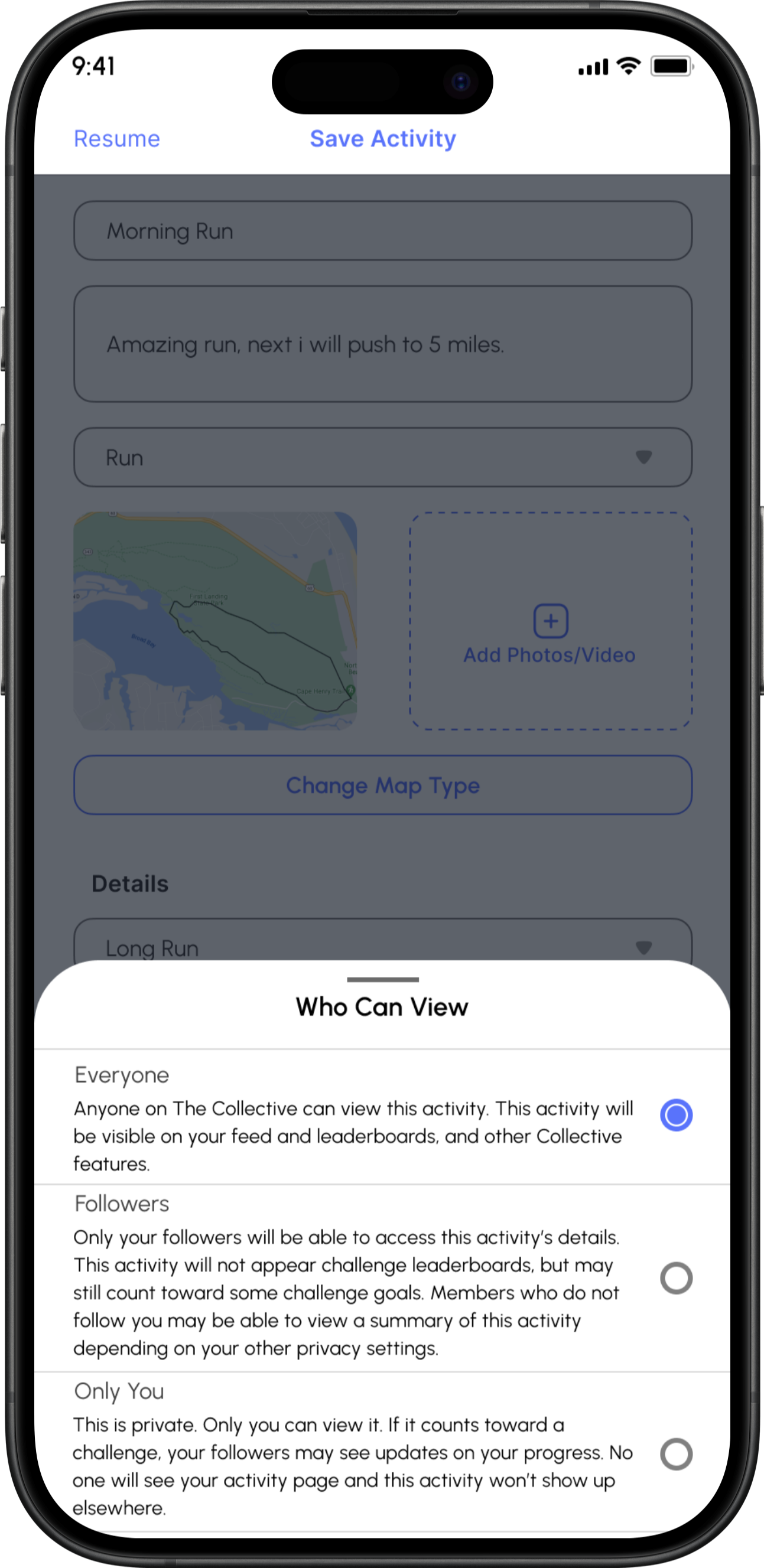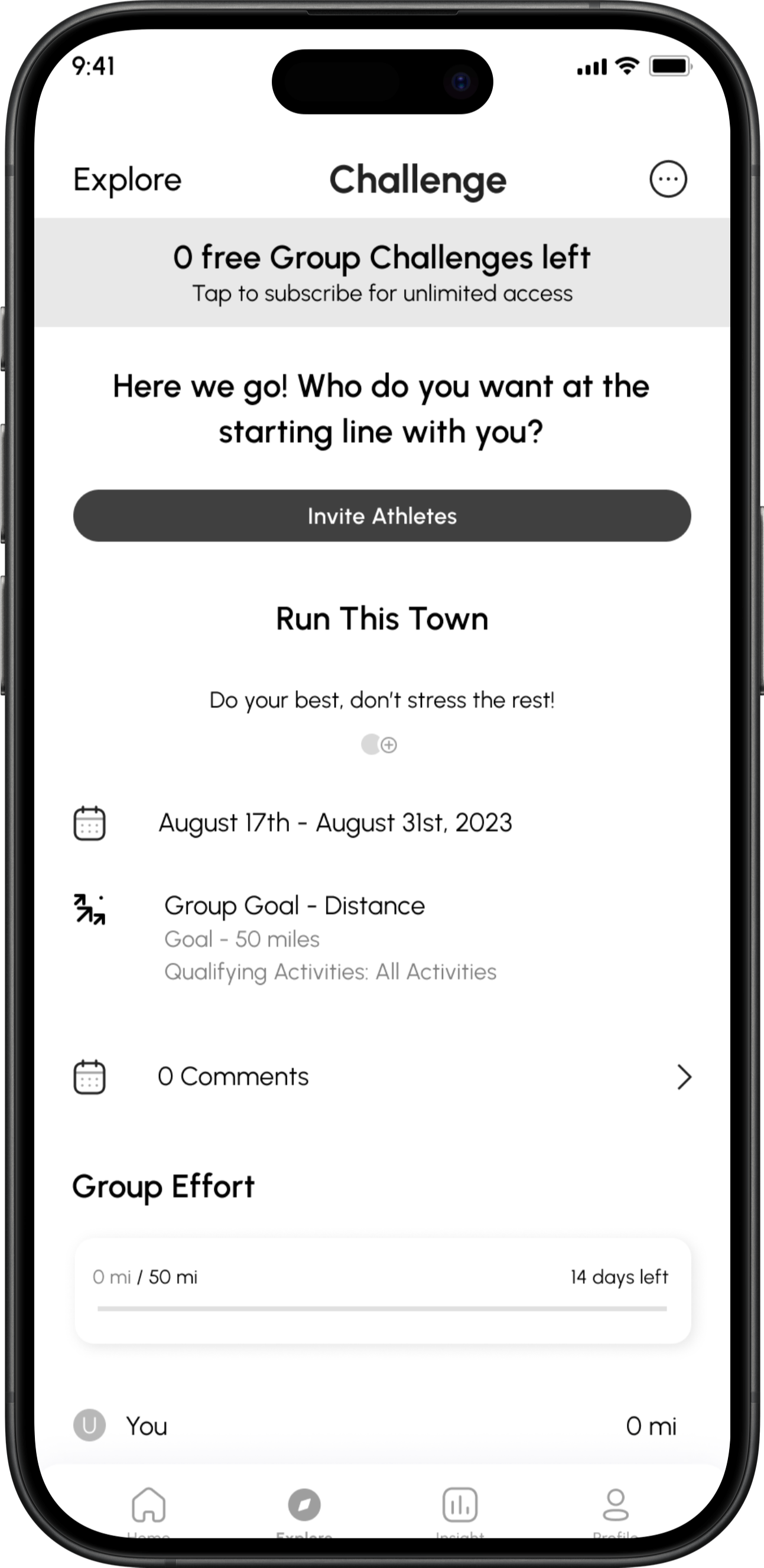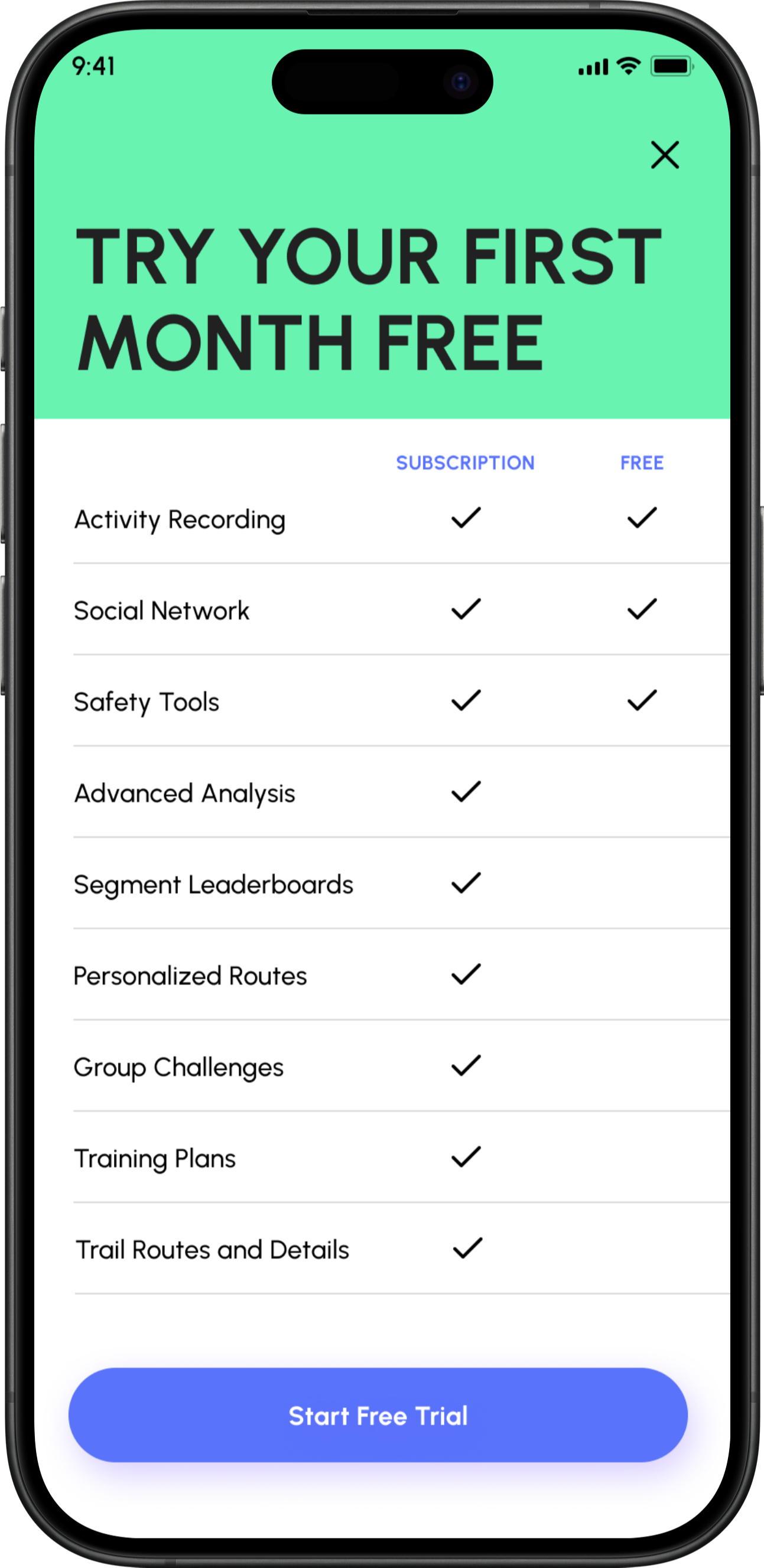Collective
Project Overview
A well-established company launched a family and friends fitness tracking app three years ago, catering to both iOS and Android users. The app allows users within a group to track and compare their health and fitness progress. However, the absence of a messaging feature and a drop in user engagement after the initial three weeks has prompted the company to seek improved engagement and retention through the integration of messaging.
The hypothesis is that by allowing members of the family or group to communicate with one another at any point throughout their health tracking experience, both engagement and repeat usage metrics will improve.
MY role
I performed user research, user flow, wireframes, and prototype in a 15 week solo student project for Springboard UX/UI bootcamp.
How can I seamlessly integrate messaging features into the existing fitness tracking app to not only enable communication about health and fitness goals but also create a holistic, integrated messaging experience that significantly improves user engagement and encourages repeat usage?
The Solution
Personalized Group Challenges
Personalization to groups goals
Invite friends to exercise together
Message friends in group challenge chats
Privacy
Users can decide the level of privacy with everything they share
Users can decide how much of their metrics from their activities they want to share
Choose to share publicly, privately, or within certain groups or clubs
Social network feed
Notifications
Users can stay connected with friends and family
Users can post activities, achievements, and check-ins
User Research
“I feel proud sharing fitness achievements but would prefer to share with only my close circle”
Research Strategy
The first thing I focused on was my research strategy. In order to identify the flaws in the current UX and UI, we conducted a usability test by interviewing people that fit our user archetype. These were users between 18-34 years old who are very tech savvy and budget friendly. These users also prioritize messaging and communicating with friends and family. Before I began our interviews I first needed to do two things.
First I create an interview guide in preparation for Usability Testing. This enabled us to conduct our interviews in a consistent and controlled manner. Secondly I will conduct research interviews with 5 participants to uncover user perspectives, behaviors, and expectations related to messaging features for health and fitness goals.
Interview Guide
I created an interview guide that allowed me to follow a structured interviewing process, ensuring that each interview was consistent with the previous. With this guide I conducted 5 user interviews, recording the audio and keeping notes on Apple Freeform.
Understand user behaviors and motivations & Identify usability challenges and opportunities
Can you tell me a little bit about yourself and your experience with fitness tracking apps?
Do you use fitness apps & if so do you use multiple products and why?
How often do you use them?
Do these products help you achieve your fitness goals?
Can you share any experiences or examples of receiving support, encouragement, or motivation related to your health and fitness goals?
How do you envision the messaging feature enhancing or replacing these experiences?
Assess user expectations and desires regarding messaging features
What types of messages or content would you be interested in sharing with others regarding your health and fitness goals/achievements?
Can you describe any challenges or barriers you currently face when trying to share your health and fitness progress with others?
Any emotions or thoughts that come to mind when thinking about others seeing your health and fitness goals/achievements?
Research Synthesis
How Might We
Assess user expectations and desires regarding messaging features
How do you currently seek accountability or support for your health and fitness goals?
How might an integrated messaging experience improve this aspect for you?
Can you describe your current methods of communicating with others about your health and fitness goals and achievements?
Investigate the role of social features & explore the impact of messaging on user engagement and retention
How do you envision the ability to message others within the app impacting your motivation and accountability towards your health and fitness goals?
How frequently do you anticipate messaging others about your health and fitness progress?
Do your preferred fitness apps have messaging features such as individual messaging, group messaging, notifications, progress sharing, etc and which do you find most useful?
What drawbacks or benefits, if any, do you have about messaging others within the app regarding your health and fitness goals/achievements?
After the interviews I grouped and categorized the data into an Affinity Map which enabled me to have a clearer understanding of the user experience.
Usability Testing Insights
Based on the trends in the Affinity Map I noticed users appreciate features such as reminders, notifications, incentives, and the ability to share progress and achievements to stay motivated. Additionally, users emphasize the importance of communication and social connection within the app, including messaging, video chat, and interaction with fitness coaches and like-minded individuals.
Motivation and Accountability
Users express the importance of motivation and accountability in their fitness journey.
Privacy and Customization
Users want the ability to choose what information they share, whether it's progress, metrics, or workout details.
communication and social interaction
Users emphasize the need for communication and social connection within the app.
User Flow
How Might We…
Introduce a rewards system for reaching fitness milestones and personalization options for sharing progress?
They value features like reminders, notifications, incentives, and the ability to share progress and achievements to stay motivated and on track.
They prefer the option to keep certain aspects of their fitness journey private, especially when they are struggling.
They desire features like messaging, video chat, and the ability to connect with fitness coaches and like-minded individuals.
How Might We…
Allow for users to tailor their data sharing preferences and control the depth of content shared about their fitness journey?
Many users admit to struggling with consistency in their fitness routines. They express the need for features that help them maintain a consistent workout schedule.
Social interaction and support from a close circle are seen as valuable for motivation.
After numerous testing and feedback I altered the user flow of the app, so it would be a better experience for all users. I decided to focus my efforts on improving the user depth of privacy and social connection.
I conducted a brainstorming session where I re-framed the problem. I started thinking about the goal of increasing engagement and spent time sparking ideas for possible innovative solutions.
How Might We…
Address users need for motivation and accountability through incentives and social engagements?
Design
Holistic approach
In the design phase of the project, I faced a pivotal decision between two compelling design directions: "Customization for User Empowerment" and "Motivation-Driven Features." Recognizing the significance of both aspects, I chose to integrate elements of both designs. This strategic split allowed for a more holistic approach, providing users with the power to personalize their fitness tracking experience while also motivating them through tailored features. By embracing this duality, I aimed to foster a sense of ownership and empowerment among users, while simultaneously offering the motivation needed to ensure consistent engagement with the app. This hybrid approach aligns with the business goals of increasing user engagement and retention through messaging, as it offers a versatile solution that caters to individual preferences and encourages sustained use of the product.
Lo-Fi Wireframing
After deciding on the design direction, I moved into Figma and created lo-fidelity wireframes. Following the user flow, I chose on flows and mapped out the different designs.
Testing & Improvements
3 major improvements in my design
In response to feedback from multiple peers and guidance from my mentor, I continuously refined my design over a 7 day period, implementing three significant enhancements:
Simplicity & Privacy
Users voiced that this tab felt extremely crowded
To ensure users privacy is kept, the default setting changed to “followers”
Final Direction
Functionality
Users were unsure of what the functions were of the buttons on the record screen
Based on feedback, I put in plain words what each buttons were in order to lessen confusion and make for a smoother experience
milestones & direction
To curb the confusion, I gave the control back to the user by giving them the choice in where they would go next
Brief progress shown on final record activity screen

